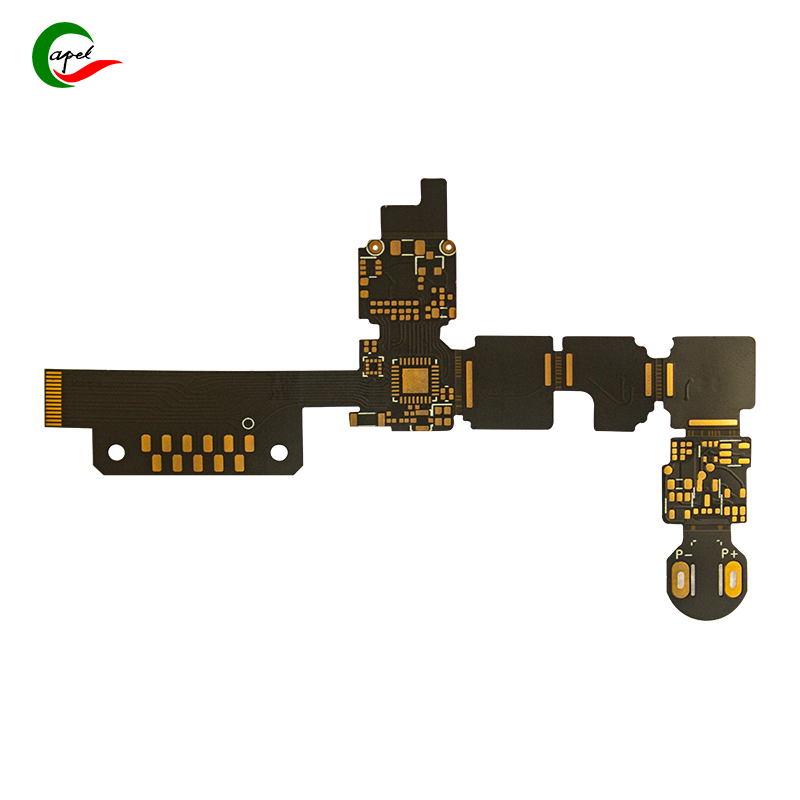Date: 2025-10-15
We've all seen it: a flexible PCB works perfectly on the test bench, but after a few bends, the resistance becomes unstable. The culprit is often not the design itself, but an overlooked detail—plating thickness. Getting this right is what separates a reliable flex circuit from a field failure.
Through extensive testing, we've learned that plating isn't just a protective coating; it's an active participant in the circuit's mechanical life. Let me break down what actually works.
When a flex PCB bends, the outer copper surface stretches. Do this repeatedly, and microscopic fatigue cracks begin to form. These aren't full breaks, but they're enough to disrupt smooth electron flow, causing contact resistance to spike.
A well-optimized plating layer combats this in two critical ways:
It acts as a reinforcing member, adding cross-sectional area and reducing the overall strain on the base copper for any given bend radius. Fewer micro-cracks initiate.
It serves as a crack-bridging medium. Even if a micro-crack forms in the base copper, a sufficiently thick and ductile plating layer can span the gap, maintaining the electrical path.
The result we've measured? A properly plated trace might see only a 20-50% resistance increase after testing, while an unplated or poorly plated one can fail by 300% or more.
The "perfect" thickness isn't a single number—it's a range dictated by how your product will be used.
For Low-Flex Applications (≤100 bends/year)
Think: set-and-forget installations like internal IoT sensors.
Our Go-To: Nickel-Gold (3–5μm Ni; 0.1–0.2μm Au)
Why: The gold ensures excellent surface contact and corrosion resistance for connectors or pads, while the thin nickel provides a robust barrier. The stiffness isn't a deal-breaker here.
Expected Performance: Resistance change should stay well below 20%.

For Dynamic Flexing (100–1,000 bends/year)
Think: portable medical devices, frequently folded controllers.
Our Go-To: Pure Copper (8–12μm) or a more flexible Nickel-Gold (5–7μm Ni; 0.2–0.3μm Au)
Why: The thicker, ductile copper is excellent at absorbing cyclic stress without work-hardening and cracking. If you need the surface properties of gold, a slightly thicker, more controlled nickel-gold can work.
Expected Performance: Aim for a resistance change under 35%.
For High-Frequency Bending (≥1,000 bends/year)
Think: foldable phone hinges, continuously moving robotic arms.
Our Go-To: Pure Copper (15–20μm) on a thin nickel underlayer (3–5μm).
Why: You need maximum ductility and volume. Pure copper is your best friend here. The thin nickel underlayer is crucial for adhesion and preventing copper migration, but it's kept minimal to avoid introducing brittleness.
Expected Performance: With this setup, we've consistently kept resistance increases at or below 50% even after thousands of cycles.
Choosing a thickness from a chart is step one. Making it work in production is step two.
Uniformity is Non-Negotiable
A thick center and thin edges is a recipe for failure. Bending stress concentrates at the trace edges, and that's exactly where thin plating will crack first. We've switched almost exclusively to pulse plating processes for critical flex applications. The difference in edge coverage and grain structure is night and day, often bringing thickness variation across a trace down to 1-2μm.
Adhesion is Everything
Plating that delaminates is worse than no plating at all. Our pre-plating regimen is non-negotiable:
A thorough micro-etch of the base copper to create a pristine, high-surface-energy bonding site.
A thin "strike" layer of copper or low-stress nickel. This layer is specifically engineered for adhesion, creating a molecular bridge between the base material and the functional plating.
The "Thicker is Better" Fallacy: Slapping on 30μm of copper might seem robust, but it dramatically increases stiffness. You can turn a flexible circuit into a semi-rigid one that cracks at the first sharp bend.
Misapplying Nickel-Gold: It's a fantastic finish, but its inherent stiffness makes it a poor choice for high-cycle dynamic flexing. We once investigated a foldable device failure that traced back to cracked nickel layers in the hinge area after just a few months of use.
Ignoring the Process: Assuming any plater can handle it. Flex PCB plating requires a vendor who understands how to plate for flexibility, not just for thickness.
Stop thinking of plating as just a corrosion barrier. For a flex PCB, it's a critical mechanical component. Match your plating material and thickness to your product's actual bending life, partner with a vendor who can ensure uniformity and adhesion, and you'll eliminate one of the most common causes of flexible circuit failure.
related link:
Capel manufacturing PCBs since 2009. Professional technology and high-precision Printed Circuit Boards involved in Medical, IOT, UAV, Aviation, Automotive, Aerospace, Industrial Control, Artificial Intelligence, Consumer Electronics etc..